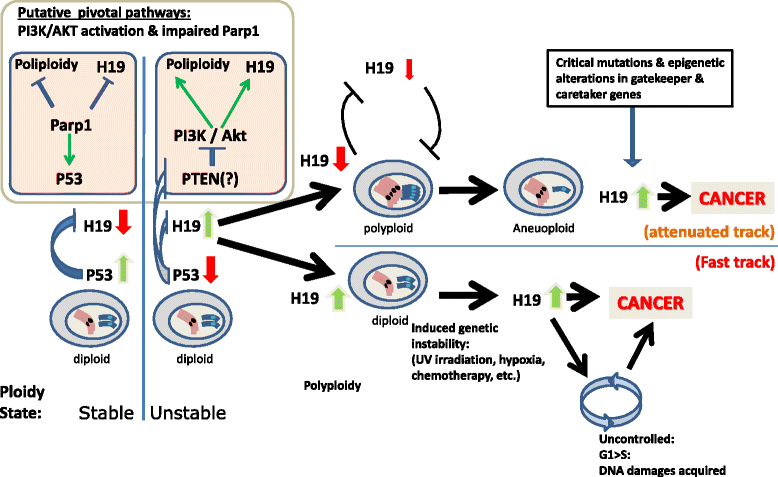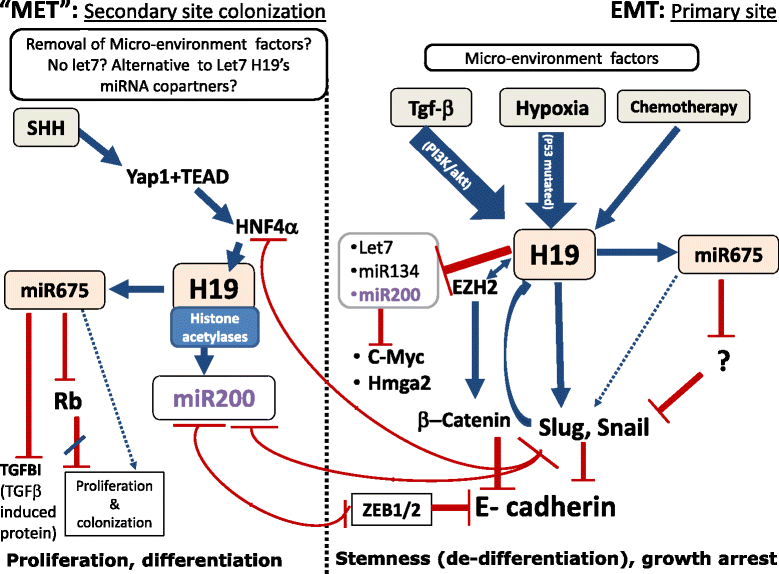The H19 Long non-coding RNA in cancer initiation, progression and metastasis - a proposed unifying theory
- PMID: 26536864
- PMCID: PMC4632688
- DOI: 10.1186/s12943-015-0458-2
The H19 Long non-coding RNA in cancer initiation, progression and metastasis - a proposed unifying theory
Abstract
The imprinted oncofetal long non-coding RNA (lncRNA) H19 is expressed in the embryo, down-regulated at birth and then reappears in tumors. Its role in tumor initiation and progression has long been a subject of controversy, although accumulating data suggest that H19 is one of the major genes in cancer. It is actively involved in all stages of tumorigenesis and is expressed in almost every human cancer. In this review we delineate the various functions of H19 during the different stages in the complex process of tumor progression. H19 up-regulation allows cells to enter a "selfish" survival mode in response to stress conditions, such as destabilization of the genome and hypoxia, by accelerating their proliferation rate and increasing overall cellular resistance to stress. This response is tightly correlated with nullification, dysfunction or significant down-regulation of the master tumor suppressor gene P53. The growing evidence of H19's involvement in both proliferation and differentiation processes, together with its involvement in epithelial to mesenchymal transition (EMT) and also mesenchymal to epithelial transition (MET), has led us to conclude that some of the recent disputes and discrepancies arising from current research findings can be resolved from a viewpoint supporting the oncogenic properties of H19. According to a holistic approach, the versatile, seemingly contradictory functions of H19 are essential to, and differentially harnessed by, the tumor cell depending on its context within the process of tumor progression.
Figures




References
Publication types
MeSH terms
Substances
LinkOut - more resources
Full Text Sources
Other Literature Sources
Medical
Research Materials
Miscellaneous

